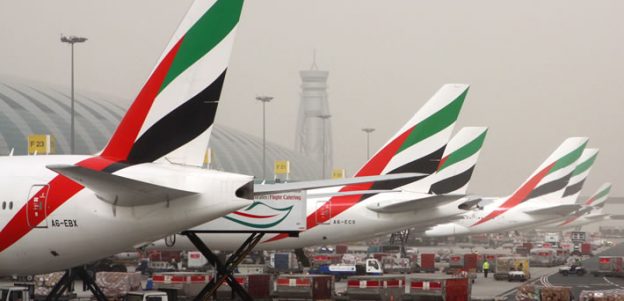Airports beyond 2020 – future growth hinges on greater integration
19 November 2013Last week the annual ACI Airport Exchange event took place in Doha, Qatar. Organised by Airports Council International, a global industry trade body.
The event alternates location between Europe and the Middle East each year, and comprises an exhibition displaying products and services of interest to the airport community, alongside a series of conferences highlighting and debating key issues affecting the industry.
I took part in the Airport Operations Conference, which had the theme “Airports beyond 2020”, and was involved in a panel discussion focused on the airport role within an integrated seamless global network – far more interesting than its title might initially indicate. The session started with a keynote address from Normand Boivin, Chief Operating Officer at Heathrow Airport, who gave a great overview of the challenges faced at the airport, and the steps taken to improve efficiency and performance. It was a very engaging and thought provoking presentation on a vision for airport operations utilising the capability of all stakeholders, with NATS positively referenced throughout the speech. It was a great scene setting piece ahead of my own panel discussion.
I took to the stage with representatives of Hochtief Airport (under new ownership and now rebranded AviAlliance), Honeywell, IATA, Doha International Airport and Airbus, to give a five minute presentation on what I felt would be the big issues beyond 2020. Going second last gave me the ability to say that after listening to the previous speakers it was obvious that we were in vehement agreement on what was needed, and that we should perhaps spend time discussing how to actually get on with it, instead of giving separate, but similar descriptions of what great looks like! Everyone concurred that the future would see greater use of Airport Operations Control Centres facilitated by effective technology. I emphasised the fact that AOCC definitions often talk about managing passenger processes from touchdown to take-off, which was limited in planning horizons, and made a plea for ANSPs to be fully integrated into future Airport Operations processes as we can support the activities much earlier than touchdown.
One point I raised which hadn’t been covered by anyone else was the increased use of remote towers in the future, either to manage truly remote or isolated locations, or as a Virtual Contingency Facility for busy international airports – remember, whilst many are still trialling the concept, NATS implemented a VCF for Heathrow in 2009.
Elsewhere in the conference arenas I listened to a great debate on the impact of the Middle East Big 3 (MEB3 as they’re now being referred to: Emirates, Etihad and Qatar Airways) on traditional airports and airlines around the globe. The CEO of Brussels Airport made an interesting comment of how the MEB3 benefitted the customers of second tier airports by providing an excellent global network to their customers. The CEO of Malaysian Airports observed that the MEB3 were simply taking advantage of timing and technology, reflecting that when the Boeing 747-400 was introduced, Europe to Australia could be done with a single stop, and airports like Kuala Lumpur and Singapore took full advantage of that. Technology has now shifted those hubs into the Middle East, and countries like Malaysia have had to change their model to adapt to the changing circumstances, by investing in attracting passengers to actually visit the nation, as opposed to transit through it. Unlike some of the whinging one hears about the competition presented by the MEB3 and their home airports, I thought this was a very sage and sanguine observation.
Like all these international events, the ACI Airports Exchange was a useful opportunity to meet new people, and highlight the depth and breadth of NATS capability. Having a stand at the exhibition raised awareness of our products and services, and provided the opportunity to view new technology designed for use in the airport industry. The event also provided the opportunity for a landside tour of the newly built Hamad International Airport, and visit the VCR, both of which are very impressive. When the operations go live there, the controllers will be using procedures designed by NATS, and the aircraft will transit airspace also designed by our team.
Qatar as a nation has bold ambitions, signalled by the growth of its airline, and the building of a truly impressive airport. It’s great to know that NATS created the all important invisible infrastructure that will facilitate its continued growth.
[Header image by isapisa via Flickr]
Comments
Please respect our commenting policy and guidelines when posting on this website.




